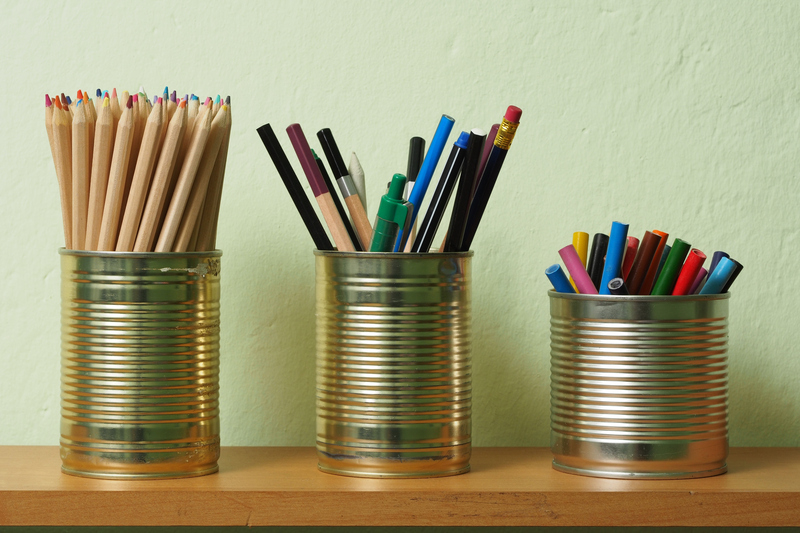Plastics to Steer Clear Of: Essential Knowledge
Plastics are woven into the fabric of our daily lives. From packaging and kitchen utensils to toys and electronics, these versatile materials are everywhere. However, not all plastics are created equal--some types pose significant risks to human health and the environment. In this comprehensive guide, we uncover the key plastics to avoid, why they are dangerous, and how you can make safer, more informed choices in your everyday life.

Understanding Plastic Identification Codes
Before we delve into the specific plastics to avoid, it's important to understand how plastics are categorized. Plastic products usually have a recycling code--a number between 1 and 7--stamped on them, which indicates the type of resin used. These numbers, known as the Resin Identification Codes (RIC), help you identify and differentiate between various plastics.
- 1: PET or PETE (Polyethylene Terephthalate)
- 2: HDPE (High-Density Polyethylene)
- 3: PVC (Polyvinyl Chloride)
- 4: LDPE (Low-Density Polyethylene)
- 5: PP (Polypropylene)
- 6: PS (Polystyrene)
- 7: Other (Various including Polycarbonate and BPA-based plastics)
Some of these plastics are generally considered safer than others, but several pose noteworthy health and environmental risks. Let's explore the plastics to steer clear of, their specific dangers, and why choosing alternatives is crucial.
Major Types of Plastic to Avoid
1. Polyvinyl Chloride (PVC) - Recycling Code 3
Polyvinyl Chloride, or PVC, is commonly used in pipes, clear food packaging, toys, and shower curtains. Why should you avoid PVC? This plastic contains numerous toxic additives, including phthalates, lead, and cadmium.
- **Leaching Chemicals**: Substances in PVC can leach into food or drinks, especially when heated or exposed to sunlight.
- Phthalates Disruption: Used to soften PVC, phthalates have been linked to hormonal disruption and developmental problems in children.
- Toxic Production and Disposal: Manufacturing and incinerating PVC release dangerous pollutants, such as dioxins, which are persistent environmental toxins linked to cancer and reproductive problems.
Key takeaway: Avoid plastic products marked with "3" or "PVC," particularly food packaging, children's toys, and anything that comes into contact with food or skin.
2. Polystyrene (PS) - Recycling Code 6
Polystyrene, often found as Styrofoam, is widely used in disposable plates, cups, takeout containers, and packaging materials. Though light and convenient, this plastic is deeply problematic.
- Health Concerns: Polystyrene can leach styrene, a possible human carcinogen, especially when heated or exposed to acidic foods.
- Poor Biodegradability: It is nearly impossible to recycle and can persist in the environment for hundreds of years, harming marine life and wildlife.
- Microplastics: Breaks down into small particles that contaminate food chains and water supplies.
Best practice: Steer clear of single-use foam containers, cups, and plates--opt for reusable or biodegradable alternatives instead.
3. Polycarbonate & Other Plastics (BPA) - Recycling Code 7
Code 7 is a catch-all category including polycarbonate, acrylic, and other plastics. Many of these contain bisphenol A (BPA), a chemical linked to significant health hazards.
- BPA Leaching: BPA can migrate from plastics into food and drinks, especially when exposed to heat or scratched.
- Endocrine Disruption: BPA mimics estrogen, interfering with hormone function and development, particularly in infants and children.
- Widespread Usage: Found in water bottles, baby bottles, food storage cans, and some dental sealants.
What to avoid: Any plastic marked with a "7," unless specifically labeled as "BPA-free." Choose glass, stainless steel, or certified BPA-free plastics for bottles and containers.
Why Are Certain Plastics Harmful?
Health Hazards
Many dangerous plastics release toxins either during use or disposal. The chemicals leached can act as endocrine disruptors, affecting hormones, reproductive health, and even increasing the risk of certain cancers. Infants and pregnant women are especially vulnerable to these harmful substances.
Environmental Impact
Environmentally, problematic plastics persist for centuries. They break down into microplastics that pollute waterways, harm marine life, and often accumulate in the food chain. The production and burning of plastics like PVC also release persistent pollutants that contaminate air, soil, and water.
Common Household Items: Which Plastics to Avoid?
- Food Storage Containers: Avoid containers marked with 3 (PVC), 6 (PS), or 7 (polycarbonate/BPA).
- Baby Bottles & Toys: Steer clear of older plastic bottles and toys likely to contain BPA or phthalates.
- Disposable Cups & Cutlery: Many disposable products use polystyrene (6); switch to paper or bamboo alternatives.
- Plastic Wrap & Packaging: Some wraps are made from PVC; opt for PE or reusable silicone instead.
Safer Alternatives to Harmful Plastics
Which Plastics Are Generally Safer?
While it's best to reduce plastic use overall, some plastics are less likely to leach chemicals or persist in the environment:
- 1 (PET or PETE): Widely recycled but intended for single-use. Avoid reusing PET bottles to prevent bacterial growth.
- 2 (HDPE): Robust and found in milk jugs, detergent bottles, and some toys. Low risk for leaching.
- 4 (LDPE): Used in sandwich bags and some food wraps. Considered less harmful but not widely recycled.
- 5 (PP): Used for yogurt containers and straws. Microwave and dishwasher safe, considered low-risk.
Beyond Safer Plastics: The Best Alternatives
- Glass: Non-toxic, reusable, and recyclable.
- Stainless Steel: Durable, doesn't leach chemicals, ideal for bottles and food storage.
- Silicone: Heat-resistant, flexible, reusable for baking mats and food containers.
- Natural Fibers: For items like storage bags, look for organic cotton or hemp options.
- Compostable/Biodegradable materials: Opt for PLA (polylactic acid) or bagasse for cutlery and containers.
Tips for Identifying and Avoiding Harmful Plastics
- Check Recycling Codes: Always look for the number stamped inside the recycling triangle. Avoid 3, 6, and 7 unless labelled as safe or BPA-free.
- Avoid "Vintage" Plastics: Older plastic items are more likely to contain harmful additives, especially BPA and lead.
- Never Heat Food in Plastic: Heating increases leaching risk, even for safer plastics.
- Use Glass or Stainless Steel for Babies: Young children and pregnant women are most at risk, so use non-plastic alternatives for bottles and food storage.
- Reduce Single-Use Plastics: Opt for reusables whenever possible to cut down on both exposure and environmental waste.
Frequently Asked Questions About Plastics to Avoid
Is BPA the only harmful chemical I should worry about?
No. While BPA is widely recognized, other chemicals like phthalates, PVC additives, and styrene also pose significant health concerns. Always opt for BPA-free and/or phthalate-free labeled products when available.
Are all plastics with recycling code 7 unsafe?
Plastics marked with 7 should be approached with caution. Some, like polycarbonate, contain BPA, but others (such as the newer plant-based plastics) may not. Look for specific certifications or choose "BPA-free" labeled products.
Is polystyrene safe for food packaging?
Polystyrene should be avoided for food use wherever possible. Heat, microwaving, or acidic contents increase the risk of chemical migration into food.
Can I recycle harmful plastics to reduce their impact?
Unfortunately, many "avoid" plastics (like 3, 6, and 7) are not widely recyclable. Choosing readily recyclable plastics (like 1, 2, and 5), reducing use, and selecting alternatives are better options.

The Future of Plastics: Moving Toward a Safer, Sustainable World
As awareness of the dangers of certain plastics grows, companies and governments are making changes. Bans on single-use plastics, moves towards BPA-free production, and advances in compostable materials are promising signs. You can do your part by educating yourself, making informed choices, and advocating for policy changes.
Reducing your exposure to plastics to avoid is a powerful step towards safeguarding your health and the planet.
Summary Table: Plastics to Avoid and Safer Choices
| Plastic Code | Common Uses | Risks | Best Alternatives |
|---|---|---|---|
| 3 - PVC | Food wrap, pipes, toys | Toxic additives, phthalates, dioxins | Glass, stainless steel, PE wraps |
| 6 - PS | Cups, plates, packaging | Styrene leaching, non-biodegradable | Bamboo, paper, stainless steel |
| 7 - Other (PC/BPA) | Water bottles, food containers | BPA leaching, hormonal disruption | BPA-free, glass, stainless steel |
Conclusion: Make Conscious Choices About Plastics
Steering clear of the most harmful plastics requires a blend of awareness, action, and advocacy. By learning to identify plastic codes, selecting non-plastic alternatives, and supporting policies that limit toxic materials, you help protect yourself, your loved ones, and our planet for future generations. Remember, even small changes--like choosing a glass water bottle or bamboo cutlery--can make a meaningful difference in the global fight against plastic pollution.
For your health and the environment, stay informed about dangerous plastics and make safer choices every day. Share this essential knowledge with your friends and family, and become part of a smarter, healthier future.